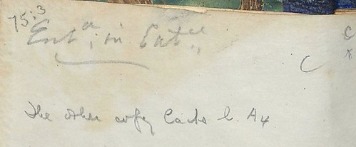
Of course, when the sales price equals the asset’s book value, no gain or loss occurs. Assets net book value is the recorded value of an asset in an organization’s accounting records. It is calculated by deducting accumulated depreciation, depletion, amortization, and impairment from the original cost of the asset. This figure represents the gradual reduction in the recorded cost of a fixed asset and does not reflect the current market price of the asset.
In-memory Computing Market Huge Growth Opportunities and … – Digital Journal
In-memory Computing Market Huge Growth Opportunities and ….
Posted: Mon, 04 Sep 2023 14:49:16 GMT [source]
If the asset is fully depreciated, you can sell it to make a profit or throw / give it away. If the asset is not fully depreciated, you can sell it and still make a profit, sell it and take a loss, or throw / give it away and write off the loss. In short, depreciation lets you spread out the asset’s cost over its useful life (how long you expect it’ll last). Once your sale has been recorded you would need to post a manual Journal entry to Debit your new Asset ledger by the net sales value and Credit the 4200 nominal with this same amount. If an asset still has some value and you decide to sell it, you must record this in your accounts as well.
Create a free account to unlock this Template
The $200 of gain on sale of equipment in this journal entry will be recorded under the other revenues of the income statement. Likewise, we usually don’t see the gain on sale of equipment account on the income statement as it is usually included in the other revenues with many other small revenues. By comparing an asset’s book value expenditure definition, expense vs expenditure, and types (cost less accumulated depreciation) with its selling price (or net amount realized if there are selling expenses), the company may show either a gain or loss. If the sales price is greater than the asset’s book value, the company shows a gain. If the sales price is less than the asset’s book value, the company shows a loss.

When there is a gain on the sale of a fixed asset, debit cash for the amount received, debit all accumulated depreciation, credit the fixed asset, and credit the gain on sale of asset account. When there is a loss on the sale of a fixed asset, debit cash for the amount received, debit all accumulated depreciation, debit the loss on sale of asset account, and credit the fixed asset. When all accumulated depreciation and any accumulated impairment charges are subtracted from the original purchase price of the asset, the result is the carrying value of the asset. Subtracting the carrying amount from the sale price of the asset will give us a positive or negative remainder. If the remainder is positive, it is recorded as a gain on sale of asset, but if it is negative, it is recorded as a loss on sale. On the income statement of a company, the gain on sale is recorded as a non-operating income because it is another income stream from the core income stream of the company.
Difference Between Depreciation, Depletion, Amortization
I now have an investment with a market value of \$100 and an investment account showing \$100, no adjustment needed. If your sales returns and allowances account is high compared to your revenue account, you may be offering too many discounts or have a product quality issue. Some accounts are increased by debits and decreased by credits. So, instead of adding it to your revenue, you add it to a sales tax payable account until you remit it to the government.
Debit the cash account in a new journal entry in your double-entry accounting system by the amount for which you sold the business property. In this case, the loss on sale of fixed asset amounting to $375 here will be classified as other expenses in the income statement of ABC Ltd. Careful consideration should be given to the gain on sale journal entry and other related accounting entries to accurately reflect the financial condition of an organization. The van’s original cost was $45,000 and its accumulated depreciation was $43,600 as of the date of the sale. Therefore, the van’s book value as of March 31 was $1,400 (cost of $45,000 minus accumulated depreciation of $43,600).
Determining Service Life of an Asset
Record new equipment costs on your business’s balance sheet, typically as Property, plant, and equipment (PP&E). Keep in mind that equipment and property aren’t the only types of physical (i.e., tangible) assets that you have. Unlike equipment, inventory is a current asset you expect to convert to cash or use within a year. TFC is required to report the full amounts of the sale proceeds to SPA. To account for the net proceeds in USAS, see Proceeds from the Sale of Surplus Property (FPP A.032).
The Partisan Parting of TV News – Econlib
The Partisan Parting of TV News.
Posted: Mon, 04 Sep 2023 15:02:23 GMT [source]
So the eventual gain/loss gets recognized in the “recognized gain/loss” account when the asset is sold. The “unrealized gain/loss” account tracks the increases and decreases in value until you sell it at which point it zeroes out. The balances sheet now shows the zero investments and zero adjustment. The activity statement will have the \$25 realized gain and a \$30 unrealized loss (yes, that nets to this months drop in value from \$130 to \$125). Motors Inc. estimated the machinery’s useful life to be three years.
Sales Discount or Allowance Entry
Next is to debit the accumulated depreciation account in the same journal entry by the amount of the asset’s accumulated depreciation. The accumulated depreciation on the balance sheet is the total depreciation that the business recorded while it owned the asset. Accumulated depreciation is a contra-asset account and as such would decrease by a debit entry and increase by a credit entry. For example, assume you recorded $15,000 in depreciation on the asset while you owned it, you will debit accumulated depreciation by $15,000. The fixed asset sale is one form of disposal that the company usually seek to use if possible. In this case, the journal entry of fixed asset sale may result with debit or credit in the income statement depending on how much the company sell the asset comparing to its net book value.
However, the debit to the sales returns and allowances account ultimately subtracts $10 from your revenue, showing that you actually only earned $40 for the shirt. In recording a journal entry for sales, you’ll need to pass entry for sales—that is, move the information to all of the different accounts where it needs to be recorded. To create a journal entry in your general ledger or for a sale, take the following steps. Before we dive into how to create each kind of fixed asset journal entry, brush up on debits and credits.
Then debit its accumulated depreciation credit balance set that account balance to zero as well. Debit Cash or the new asset if either is received in exchange for the one disposed of, if applicable. Finally, debit any loss or credit any gain that results from a difference between book value and asset received. When an asset is sold or scrapped, a journal entry is made to remove the asset and its related accumulated depreciation from the book. In some cases, a company may record a gain on sale of asset as a deferred gain, if the sale is part of a larger transaction or the proceeds will be received over time. In this case, the journal entry records the gain as a deferred credit.
- We faced problems while connecting to the server or receiving data from the server.
- The reason you record allowances and returns in a separate account is because it helps you keep track of revenue losses from customers that change their minds or products with quality issues.
- Hence, recording it together with regular sales income is totally wrong in accounting.
- Furthermore, prioritizing profit over other considerations may lead to unethical behavior such as exploiting workers or engaging in environmentally harmful practices.
- The transferee gains ownership of the asset and the transferor recognizes a gain or loss on the sale.
When an asset is disposed of, all of the assets’ accumulated depreciation must be removed from the Accumulated Depreciation account with a debit entry. There are four accounts affected when writing off a fixed asset at disposal. When you write something off the books, accounts with normal debit balances are credited and accounts with normal credit balances are debited. Keeping accurate records through journal entries for gains resulting from sales is vital when planning growth strategies for your company’s future.
